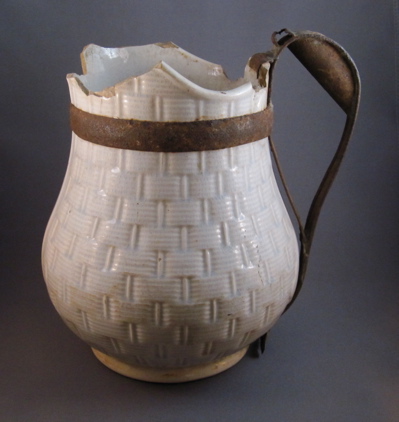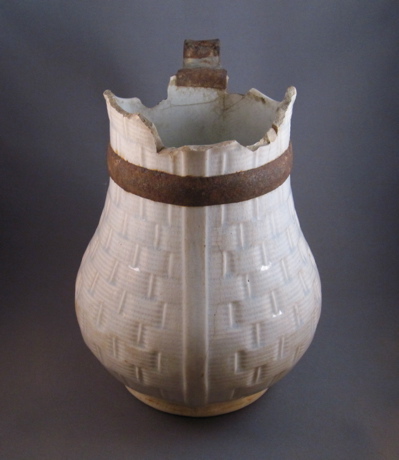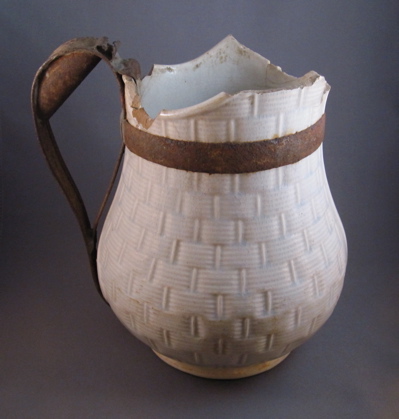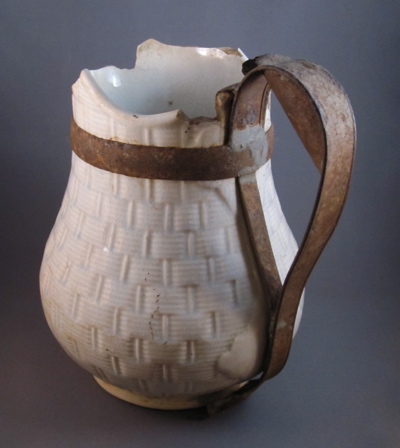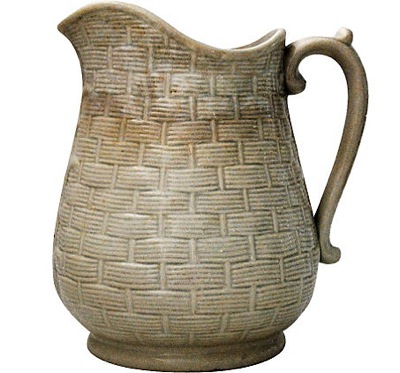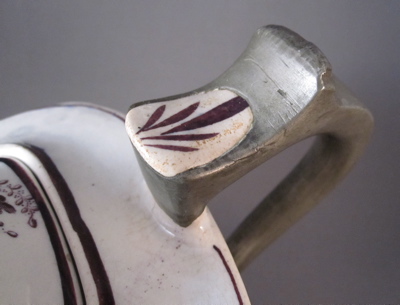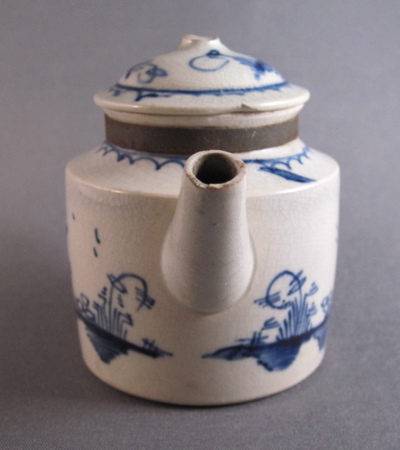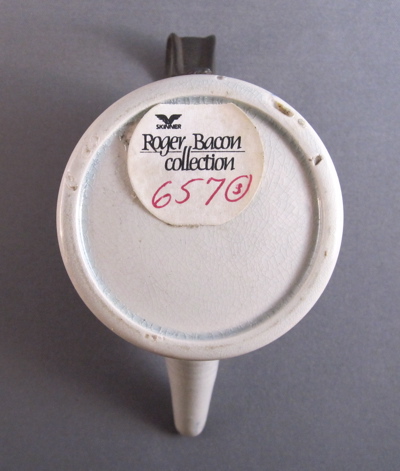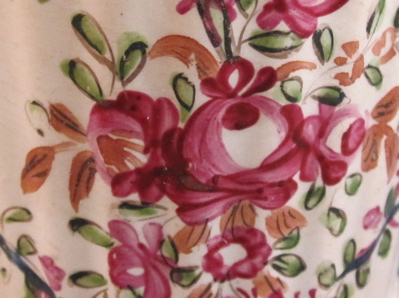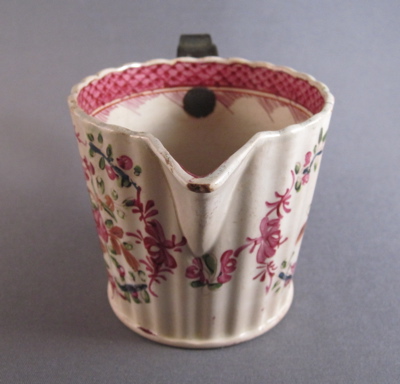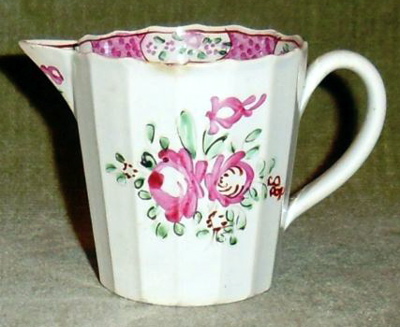Not much is known about this large white ironstone water jug with impressed basket weave design and pearlware glaze. It was found at a bottle dig site in Harper’s Ferry, NY, and remarkably, the tin handle, buried in the ground for dozens of years, remained mostly intact. The neck and spout of the jug were not so lucky, as much has broken off, revealing an asymmetrical jagged edge. This scrappy jug was made in England in the mid to late 19th century, and measures 9-1/4″ hight to top of handle and is 7-1/2″ at its widest point.
This intact jug shows what the original handle and top edge of my jug would have looked like before the tumble.
Photo courtesy of One Kings Lane
